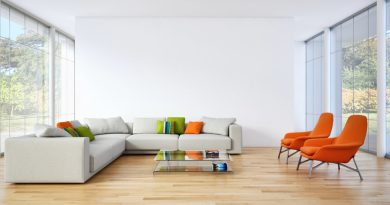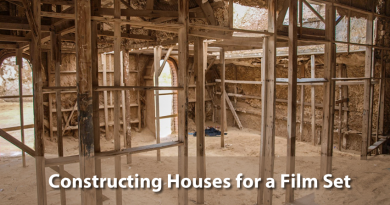The Transformative Art of Set Decoration
The Transformative Art of Set Decoration
Oh, yeah, it’s movie night, and whether you’re a film buff or a binge TV watcher, you grab a beverage, an assortment of snacks, and dim the lights as you settle into the world of your favorite story. Could be the gritty western reimagined world of Yellowstone, or how about the mind bending an eerie world of time travel that is Dark? For the sake of argument, why not a recent fan favorite, Game of Thrones. So you’re watching that final season; Jon Snow celebrates with his fellow Northmen while Daenerys watches from a dark corner–the torches flicker their medieval light, the stone walls capture the dankness of a castle, everything seems just as it should be.
But wait a minute, none of this is real. The Stark Castle, the Targaryian land of Dragonstone, Westeros? All fictional. So how should it be? What you’re indulging in when you buy the worlds of film and television is what Samuel Taylor Coleridge called the “willing suspension of disbelief.” In less lofty terms, he meant you set aside your disbelief to live the reality of a fictional story. But suspension of disbelief isn’t automatic. Don’t believe it? Return then to our Game of Thrones episode where in the very scene described some viewers noticed what appeared to be a Starbucks-style disposable coffee cup sitting on the table where Daenerys brooded. The outpour of outrage on social media was immediate.
The world of entertainment is rife with these little anachronisms and snafus that break the reality of a scene, but there are people who work hard behind the scenes to avoid such problems, people who create sets that feel real and true to the stories the shows present, even when the shows delve into worlds that have never existed.
Production design teams include set designers who create the large-scale construction elements of a set; set dressers who literally decorate the set with wallpaper, furnishings, carpet, lights, and more; and props teams who fill in the smaller object details that create the final touches of a story made real.
But this isn’t a simple matter of building a few things, purchasing a few more, and throwing them together to make a space that looks real. Brandee Kalish, the production designer for the Netflix’s series Dead to Me described the depth of her process in trying to create a setting: “we discuss the character layers and I’m thinking about what paint color they’re putting on the walls or what color sofa I’m going to put against that wall—what meaning is inside of a painting that’s in one of the bedrooms, it’s all very connected. There’s not one thing haphazardly put on a set, every single thing down to a pen on a nightstand is thought about.”
The magic of creating a believable world comes down to taking a number of things into account. The first question production designers must ask is: what is the nature of this world. Is it real? If so, where are we located? Answering these questions allows designers to choose details that are appropriate to setting. In Dark, for example, the Norwegian-style church central to the first season feels appropriate for the German setting of the show. Even in completely fictional worlds, designers must create rules for settings to make them feel consistent and unique. A corridor scene on an Imperial Battle Cruiser in Star Wars just wouldn’t feel right llit by tiny Ewok torches, would it?
Designers who deal in real settings must also ask questions of time period to avoid those sticky anachronisms that break our disbelief. And this can take some really in-depth research. In the show Stranger Things, for example, some viewers noticed that the Demigorgon figure the boys used with their Dungeons and Dragons set was not created until a year after the scene was set in–a small detail but one that the design team noted after articles appeared pointing out the mistake.
Designers also study the storyline and characters of the shows they create to style settings that speak honestly to the personalities of the show and that create moods appropriate to the storylines. In the Hulu series Killing Eve, the psychopathic killer Villanelle’s apartment with a refrigerator stocked with expensive champagne and a closet full of designer clothes acts as perfect accent to her quirkiness (and to the show’s) and her love of fine things. Indeed, film has to tell much of the character’s psyche through means other than dialogue. Every little detail of setting seen on screen speaks to story and character.
Ultimately, that’s what the magic of set design comes down to: every little detail. Design teams sometimes hold meetings to discuss the type of legs that should be on a sofa, the items that should be on a character’s bed stand, the type of carpet that would be appropriate to a 1950s Toronto apartment. And remember that while we see scenes play out linearly, that is not how they are filmed. The small details must not only be tracked in the moment, but out of the moment. A brief lack of attention during the filming of Pretty Woman led to Julia Roberts eating a croissant in one shot of a scene and after a brief cutaway the croissant had magically transformed into a pancake.
So the next time you’re engrossed in your favorite binge watch, think about the fact that just off camera, the world you’re believing ends. Bustling in those wings, the set design teams work hard to encourage you to willingly suspend your disbelief.



